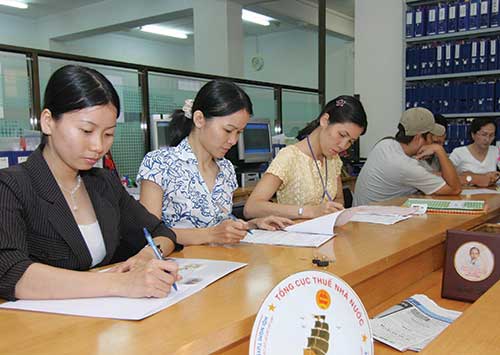Corporate tax rates fall but snags remain
 This year saw significant changes in the Vietnamese tax environment, as evident in the recently approved National Assembly regulations. Among the major changes, the reduction of the statutory Corporate Income Tax (CIT) from 25 to 22 per cent on January 1, 2014, and to 20 per cent in 2016 is seen by many as a significant attempt to reinvigorate investment in Vietnam. This article highlights the key changes, existing challenges and obstacles faced by many enterprises.
This year saw significant changes in the Vietnamese tax environment, as evident in the recently approved National Assembly regulations. Among the major changes, the reduction of the statutory Corporate Income Tax (CIT) from 25 to 22 per cent on January 1, 2014, and to 20 per cent in 2016 is seen by many as a significant attempt to reinvigorate investment in Vietnam. This article highlights the key changes, existing challenges and obstacles faced by many enterprises.
Lower corporate tax rates are a global trend
Corporate and indirect tax rates around the world constantly fluctuate as governments increase indirect tax rates to raise revenues, while others attempt to reduce corporate tax rates to attract foreign investments. Statistics show that the average statutory tax rate in the Asia Pacific region is now approximately 22 per cent, well below the current rate of 25 per cent in Vietnam.
The Vietnamese government’s efforts to reduce CIT to 22 per cent in 2014 and to further reduce it to 20 per cent in 2016 are seen by many as a strategic move, mirroring global and regional trends, making Vietnam more competitive and attractive to foreign investors.
Managing an effective tax rate remains a challenge
The economic downturn has taken its toll on the government budget, and local tax authorities are being pressed to raise more funds from their tax base with fewer resources. To that end, local tax authorities are becoming more aggressive in their tax audits and investigations, resulting in larger adjustments, more penalties and interest charges and escalating disputes over tax liabilities. In recent years, tax disputes have become both more common and increasingly acrimonious, leading to increased costs and greater uncertainty for tax payers. Therefore, effective tax rates are becoming much higher than the current statutory rate, even before the reduction to 22 per cent.
The existing tensions arise from a non-compliance culture among some tax payers and partly from unclear drafting of current CIT regulations which are compounded by inconsistencies in the way in which different local tax authorities interpret the same regulations.
Let’s take for example the regulations on the cap for deductible advertising and promotion expenses. This cap is generally regulated at 10 per cent (or 15 per cent for the first three years from a company’s establishment). This cap may be reasonable for some economic sectors, but not for those with significant advertising or promotional expenses. This provision undoubtedly creates discrimination between companies in different sectors, demonstrating a deficiency in the implementation of the regulation. Such shortcomings can lead to foreign firms hesitating over their investment decisions in relation to Vietnam.
The expenses incurred for business partners, vendors, and customers to maintain business relationships and the expenses for company retreats to improve morale and productivity also are subject to strict limitations. Although such expenses may appear to be practical and necessary, to the average business person, these expenses have traditionally been challenged and often disallowed by the tax authorities as not being related to the core business activities of the firms.
Another drawback in the current rules is the requirement on the registration of consumption levels for materials and supplies for manufacturing activities. The reality is that the practical implementation of this reporting requirement causes a lot of difficulties. For instance, an enterprise may produce thousands of plastic components for mobile phones or computers. These products have a short life-cycle due to rapid technological innovations and volatile market demands. The enterprise may eventually find it unfeasible to fulfil the requirements for the registration for such items.
However, once an enterprise fails to meet the registration requirements, such an enterprise may be subject to a deemed material cost, which is well below the actual costs incurred, resulting in a significant increase in the enterprise’s tax costs, moving the effective tax rate to a much higher rate than the headline of 25 per cent.

While headline corporate tax rates are set to fall, a jumble of other knotty tax issues need to be resolved
Headway made in tax reforms
In an effort to reform the tax system, the amended Law on Tax Administration effective from July 1, 2013 removed many significant uncertainties and helped increase transparency. These include electronic tax filing and advance pricing agreements (APAs). With e-filing, enterprises can now fulfil their tax filing requirements online, saving considerable time and efforts in fulfilling their tax obligations. With APAs, businesses can agree and determine in advance the arm’s length price, or specify the manner of the determination of arm’s length prices in relation to related-parties transactions. Furthermore, with the amended Law on Tax Administration, tax payers are also entitled to request the customs authorities to confirm in advance the HS codes, customs valuation, and certificate of origin for imported goods. This scheme provides certainties, reduces compliance costs by eliminating the risk of transfer pricing and customs audits, and other dispute resolution issues, while alleviating record-keeping burdens.
It is strongly believed that with the implementation of the amended Law on Tax Administration, the complexities and uncertainties that enterprises currently encounter will gradually be eased and the business environment of Vietnam will be more attractive to international investors.
The views expressed by the author here do not necessarily represent the official views and opinions of KPMG in Vietnam.
What the stars mean:
★ Poor ★ ★ Promising ★★★ Good ★★★★ Very good ★★★★★ Exceptional
Latest News
More News
- KPMG launches tariff modeller in Vietnam to navigate US tariff risks (July 29, 2025 | 12:11)
- Removing hidden barriers to unlock ASEAN trade (June 29, 2025 | 11:31)
- New report charts path for Vietnam’s clinical trial growth (May 21, 2025 | 08:58)
- TTC Agris strengthens market position with investment in Bien Hoa Consumer JSC (May 19, 2025 | 10:14)
- World Bank to help SBV build shared database for banking industry (April 09, 2025 | 08:55)
- New trade alliances and investment hubs are redefining global power dynamics (April 03, 2025 | 17:00)
- ACCA and KPMG forge path for business leaders to pioneer ESG excellence (March 07, 2025 | 10:09)
- VietBank signs MoU with KPMG (February 26, 2025 | 18:47)
- Warrick Cleine MBE: an honour for services to British trade and investment in Vietnam (December 31, 2024 | 20:16)
- KPMG report offers fresh insight into leveraging AI (December 24, 2024 | 09:23)


















 Mobile Version
Mobile Version